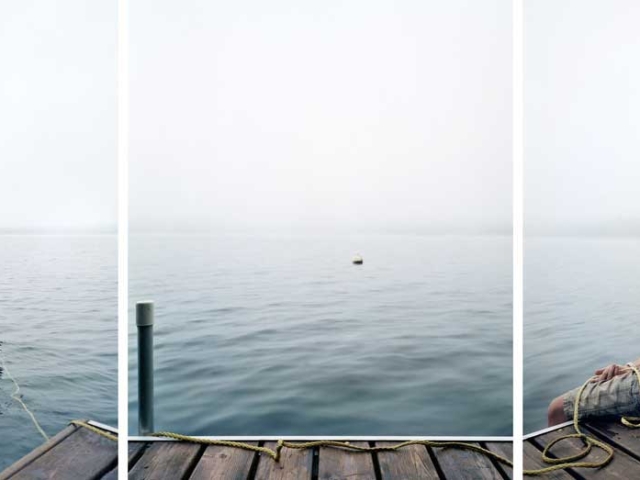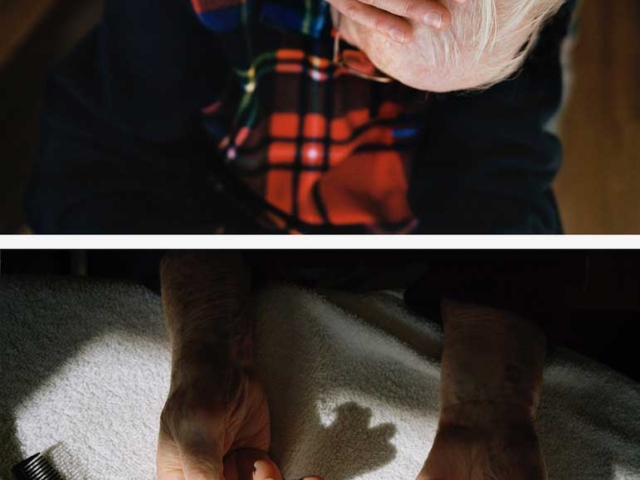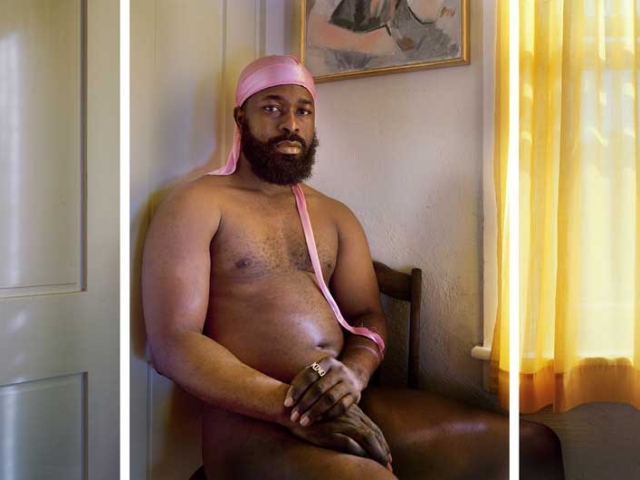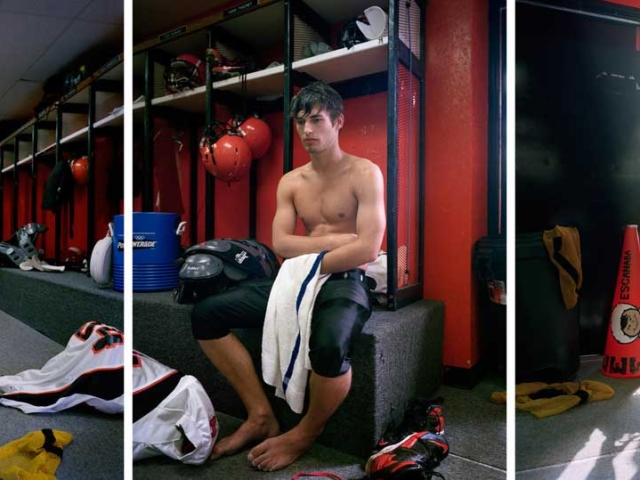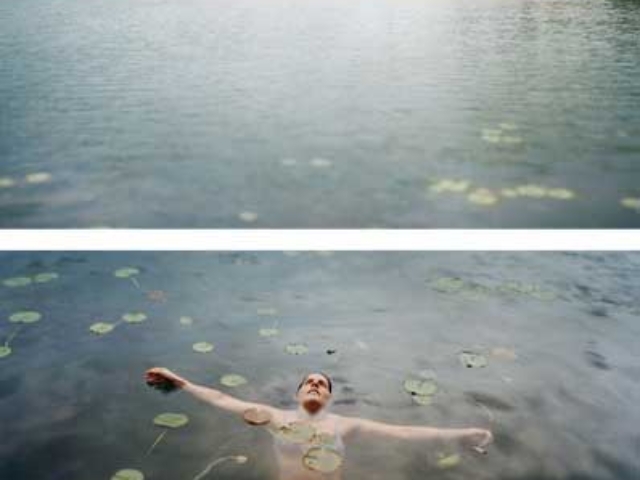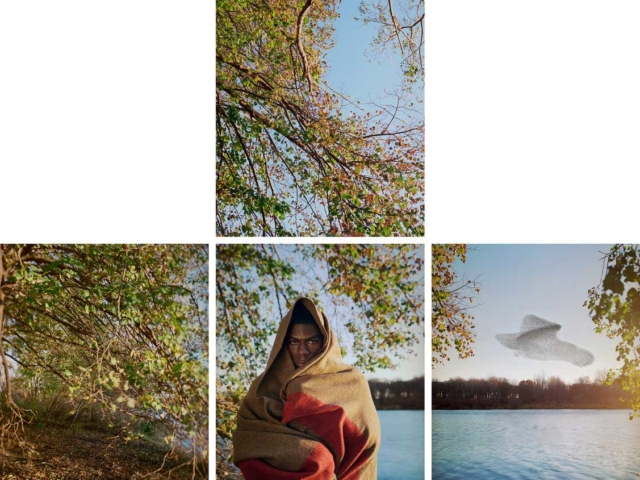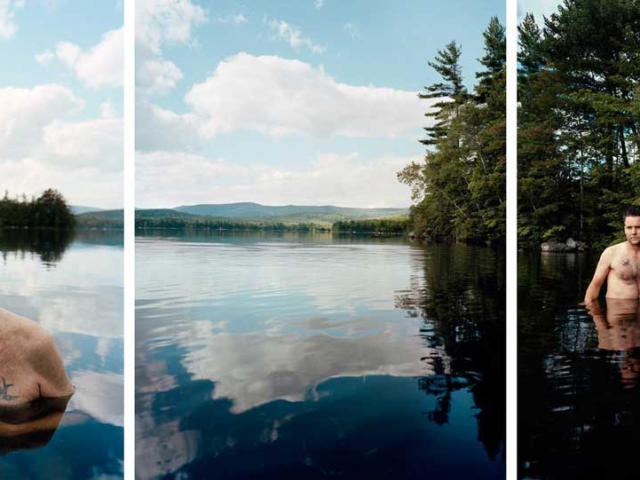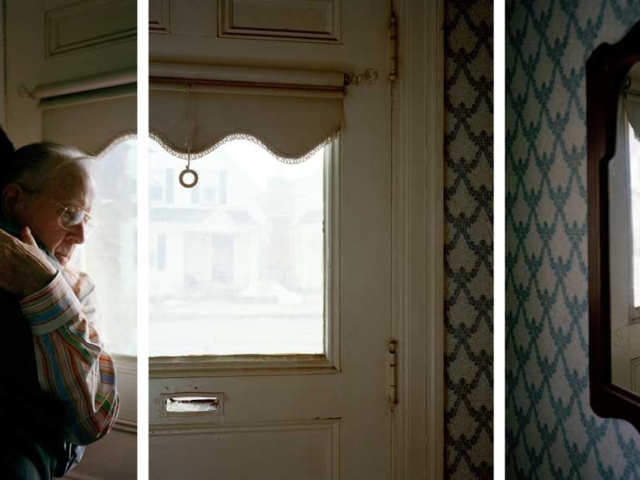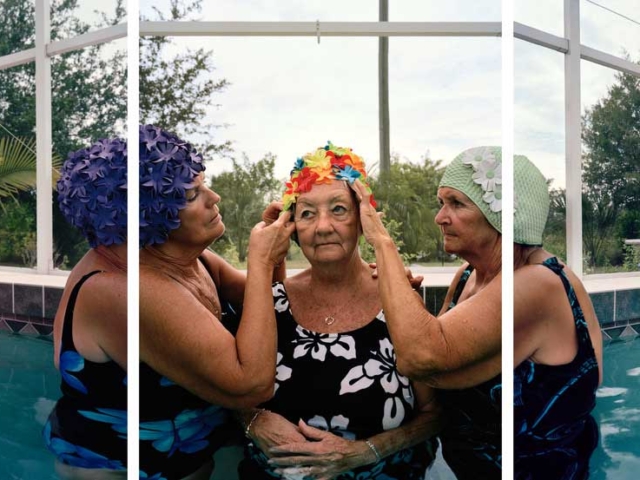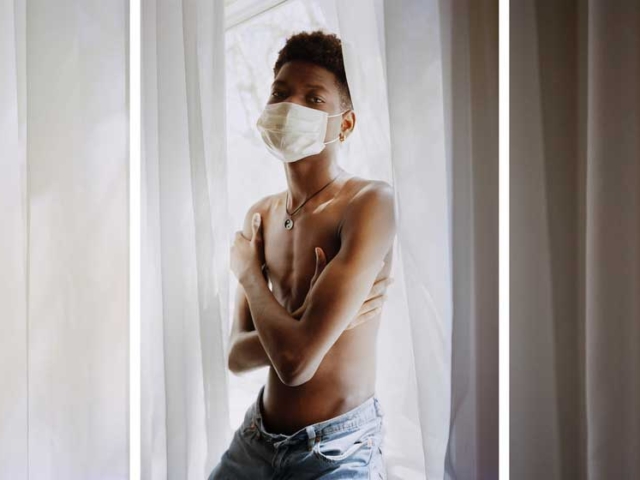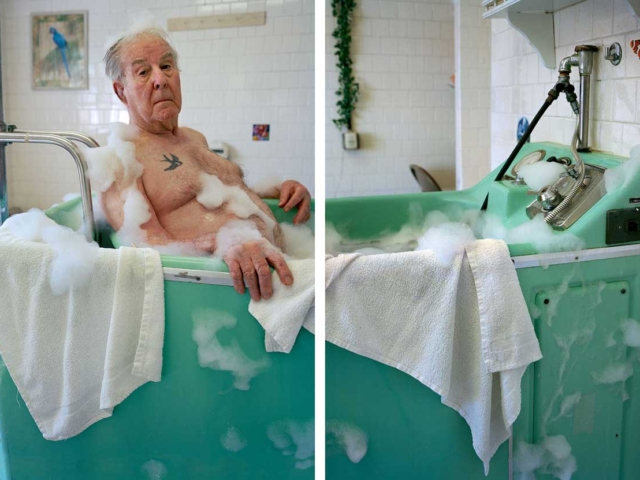David Hilliard
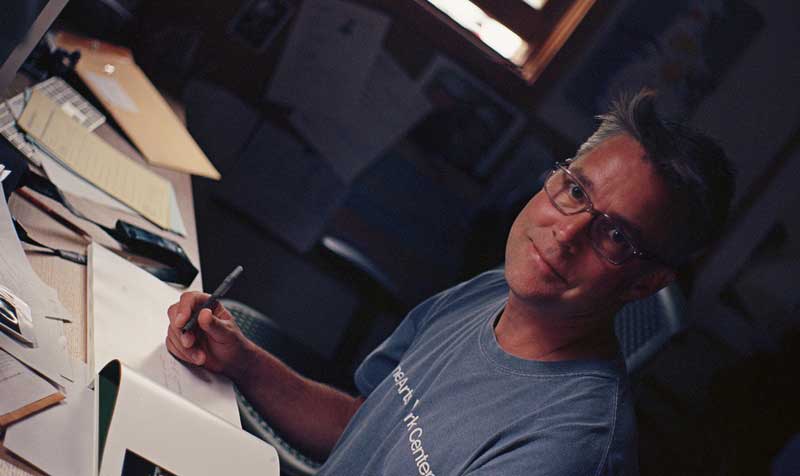
About
David Hilliard ( http://www.davidhilliard.com/) is a contemporary photographer known for his panoramic photographs. Hilliard was born in Lowell, MA, and received a BFA from the Massachusetts College of Art, before going on to earn an MFA from Yale University. His photographs are usually triptychs or larger compositions, using vibrantly colored subjects. Panel by panel, Hilliard shifts the focal plane of the subject in his photographs. These photographs can be viewed as singular pieces or as a series, much like a film. He often uses physical distance between subjects to illustrate emotional distance to the viewer. In addition to love, longing and desire, Hilliard draws upon tensions, fears and conflicted aspects of his identity to deliver photographs that speak universally. He arranges his subjects so that one single photograph can represent the passage of time. One of his better-known works is the four-panel Susie Floating (2003), which depicts a woman floating on her back in a pond laden with lily pads. An earlier work, Man at the Mirror (1997), uses three panels to represent the act of walking into a bathroom and coming to grips with oneself in a mirror. Viewed separately, each of these panels speaks on its own. The two-panel work, So it Goes (2009), expresses the fear, pain, and immaturity of teen pregnancy. Hilliard’s work is represented in the permanent collections of the Art Institute of Chicago, the Museum of Fine Arts in Boston, the Philadelphia Museum of Art, the Los Angeles County Museum, and the Whitney Museum of American Art in New York. He has been the recipient of a Fulbright Grant and a Guggenheim Foundation Fellowship. He is often a visiting lecturer at schools, including Harvard University, the Watkins College of Art, Design, and Film in Nashville, TN, and the Massachusetts College of Art and Design. His works are available through Carroll and Sons in Boston, MA; Yancey Richardson in New York, NY; Jackson Fine Art in Atlanta, GA, and The Schoolhouse Gallery, Provincetown MA.
Gallery
LACP Interviews David Hilliard
LACP asks David Hilliard ten questions about their background, career in and beliefs about photography.
Los Angeles Center of Photography: What kind of photographer are you?
David Hilliard: Fine art portrait photographer. Narrative environmental portraiture is my main area of focus. This entails a person/people represented in their natural environment, often implying aspects of narrative and storytelling.
LACP: How long have you been shooting?
DH: I’ve been photographing since I was a child. I grew up in a family that loved photography, especially my father. Nothing was ever complete in my family until a photograph was made to document it. I began to photograph seriously while in art school in Boston.
LACP: Where did you get your training?
DH:I received a BFA from the Massachusetts College of Art & Design in Boston and an MFA from Yale University
LACP: When did you know you wanted to devote your life to photography?
DH: It quickly became apparent to me in Junior year of college that photography was the purest form of my artistic voice; the perfect medium, with all of its wonderful specificity, representing my thoughts and feelings about the world around me. From that moment on I’ve never looked back and have devoted my entire artistic career to fine art photography.
LACP: Did you ever come close to giving up?
DH: Never, not even for a moment
LACP: Have you sacrificed anything by being a photographer?
DH: That’s a good question. There has been some sacrifice; moments lost or impacted by my need to document, halting action in order to make pictures. It has inconvenienced people at times I’m sure. I’m ALWAYS as work, meaning that I never stop making and thinking about images. This can be exhausting! The sacrifices are far outnumbered by the joys of living a creative photographic life.
LACP: What have you gained by being a photographer?
DH: A clearer understanding of myself, others and the world around me. Making pictures allows me to express my inner most thoughts and concerns. It gives me agency to depict what I love, dislike, desire and long to learn about. It has given me the purest voice that I could ever dream of having.
LACP: What classes do you teach at LACP?
DH: This will be my first time teaching at LACP. I’ve always heard great things about the programing and have many friends that teach here.
LACP: What do you love most about teaching?
DH: It may sound corny, but helping students to reach their full potential, shaping their critical thinking and formal eye is immensely rewarding. Teaching also allows me to see the world through someone else’s eyes, asking me to consider other perspectives and showing me what I might have otherwise missed.
LACP: What advice would you give someone who is thinking about making a career in photography?
DH: Do your best to remain true to your central concerns when making your work. DO NOT start making work strictly for others, for an audience. That being said, one must listen to feedback and criticism, consider this feedback, BUT should never lose track of what truly matters to you. That’s where the heart of strong work exists. Also, build community, diversify your skill sets, remain open and curious and take risks, fail with grace. Keep going.
